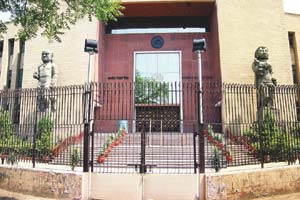The Reserve Bank of India (RBI), in line with expectations, on Tuesday kept the key repo rate unchanged at 6.75 per cent in its fifth bi-monthly monetary policy review. The cash reserve ratio (CRR) or the amount of deposits banks park with RBI has also been unchanged at 4 per cent.
RBI Governor Raghuram Rajan left open the door for more easing and affirmed the central bank’s commitment to ease it as and when room is available,saying inflation is likely to perform better than expected. He also reiterated his call for banks to lower their lending rates to reflect the steep easing undertaken by the RBI this year.
“Less than half of the cumulative policy repo rate reduction of 1.25 per cent has been transmitted by banks” and the median base lending rate has declined only by 0.60 per cent, Rajan said. He also said that RBI will shortly finalise the methodology for base rate calculation as per the marginal cost of funds which will be mandatory for banks.
In its previous policy review on September 29, the central bank had cut the repo rate, at which it lends to commercial banks, by 50 basis points to 6.75 per cent, raising the cumulative rate cuts for the calendar year to 125 basis points.
Rajan added that further rate cuts would be dependent on inflation and external developments. “The Reserve Bank will use the space for further accommodation, when available, while keeping the economy anchored to the projected disinflation path that should take inflation down to 5 per cent by March 2017,” Rajan said in his statement.
The 10-year government bond yield rose 2 basis points to 7.77 per cent from levels before the RBI decision, while the broader NSE index rose 0.4 per cent. The rupee was broadly unchanged.
The Reserve Bank will follow developments on commodity prices, especially food and oil, even while tracking inflationary expectations and external developments, he said.
The implementation of the Seventh Pay Commission proposals, and its effect on wages and rents, will also be a factor in the Reserve Bank’s future deliberations, though its direct effect on aggregate demand is likely to be offset by appropriate budgetary tightening as the Government stays on the fiscal consolidation path, RBI said.
The central bank also kept the economic growth projection unchanged at 7.4 per cent for the ongoing financial year, saying that second-quarter GDP numbers indicate early signs of recovery.
On the status quo by RBI, Deepak Joshi, president and chief business officer, Religare Housing Development Finance Corporation, said, “In the backdrop of 125 basis points (bps) reduction in benchmark rates earlier and current level of retail inflation, further rate cuts were not expected this time. However, this will not be the end of declining rate regime, this is just a beginning. In order to boost economy and targeted GDP growth, reasonable transmission of past rate cuts need to see the light. Also move to work on a methodology for determining the base rate based on the marginal cost of funds and linking small savings interest rates to market interest rates, which all banks will have to follow is a big welcome as it further help transmission of policy rates into lending rates.

